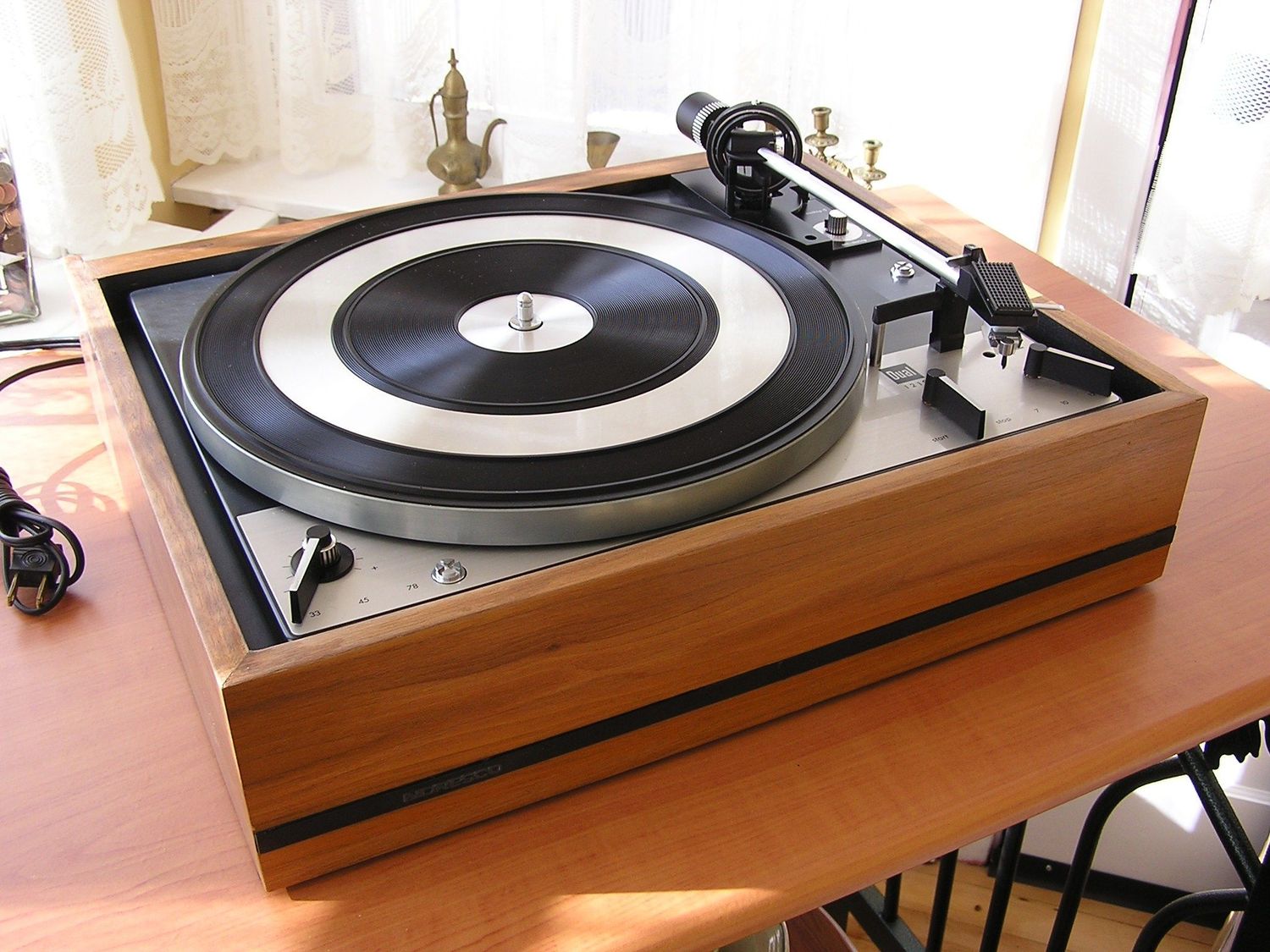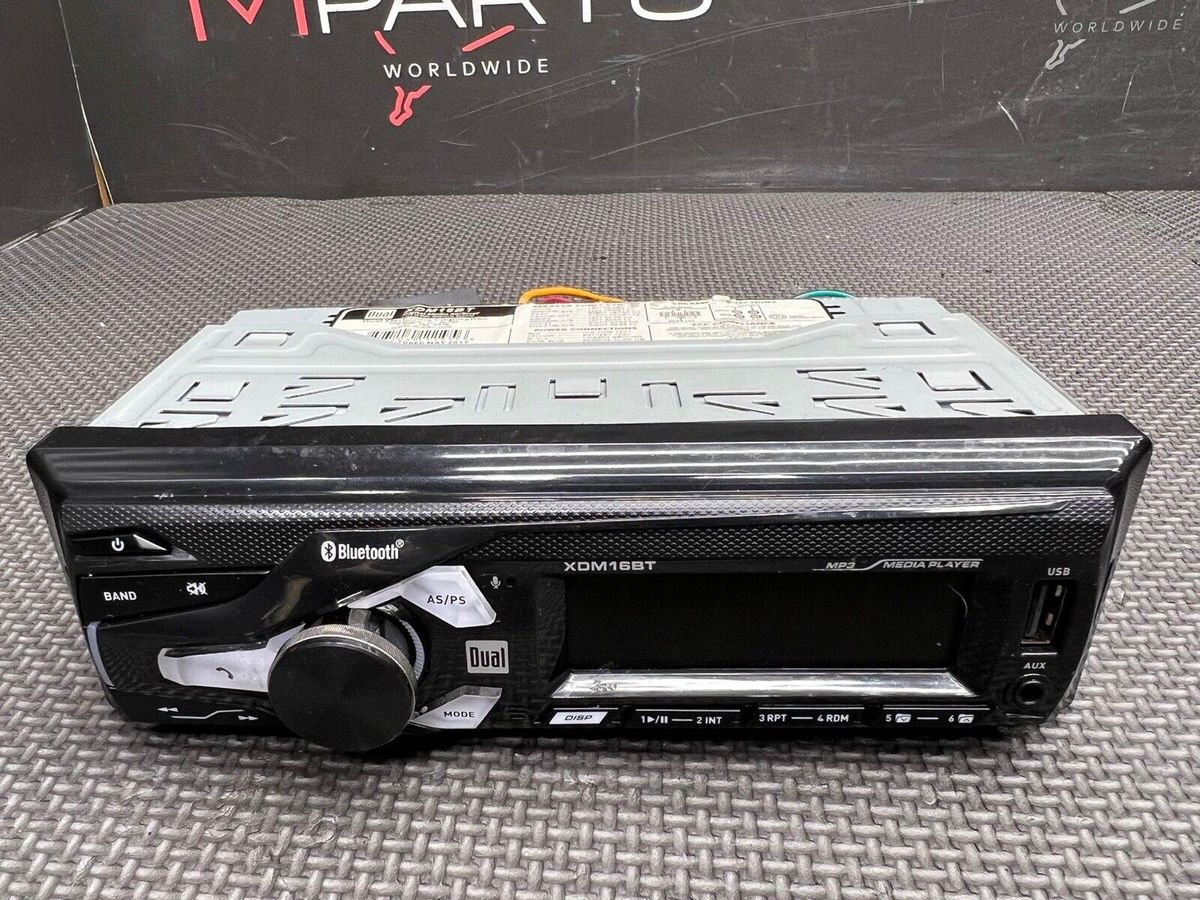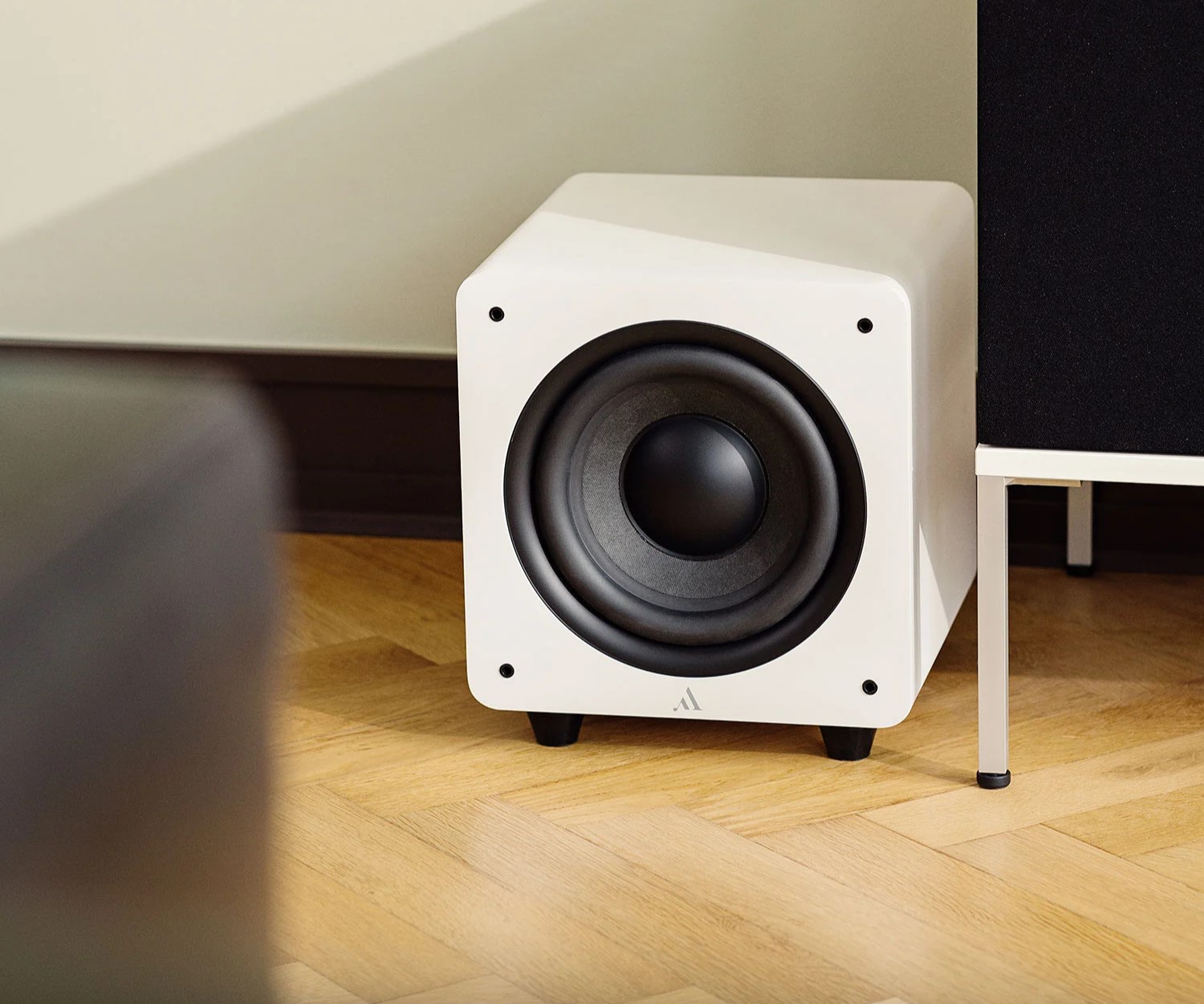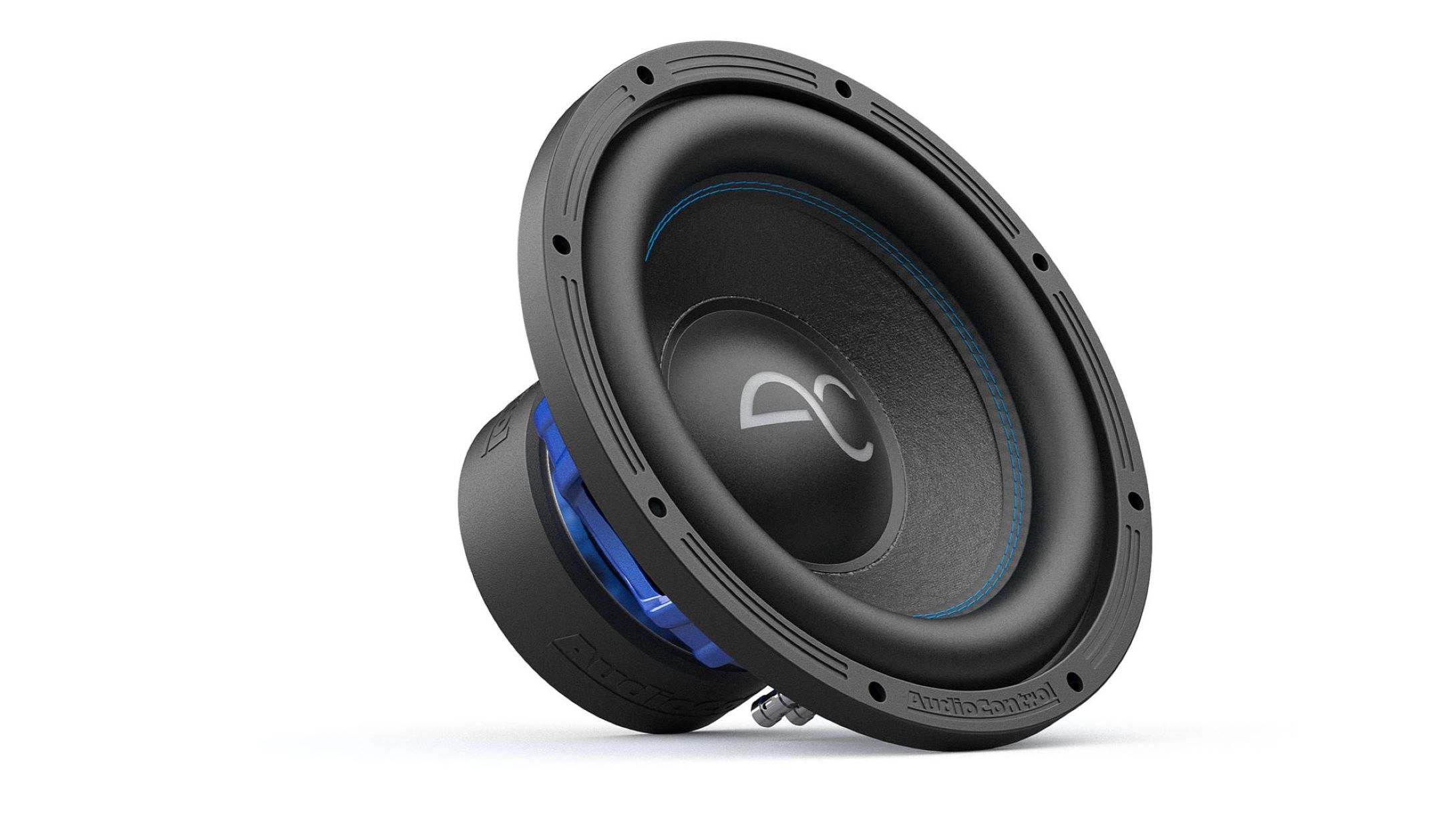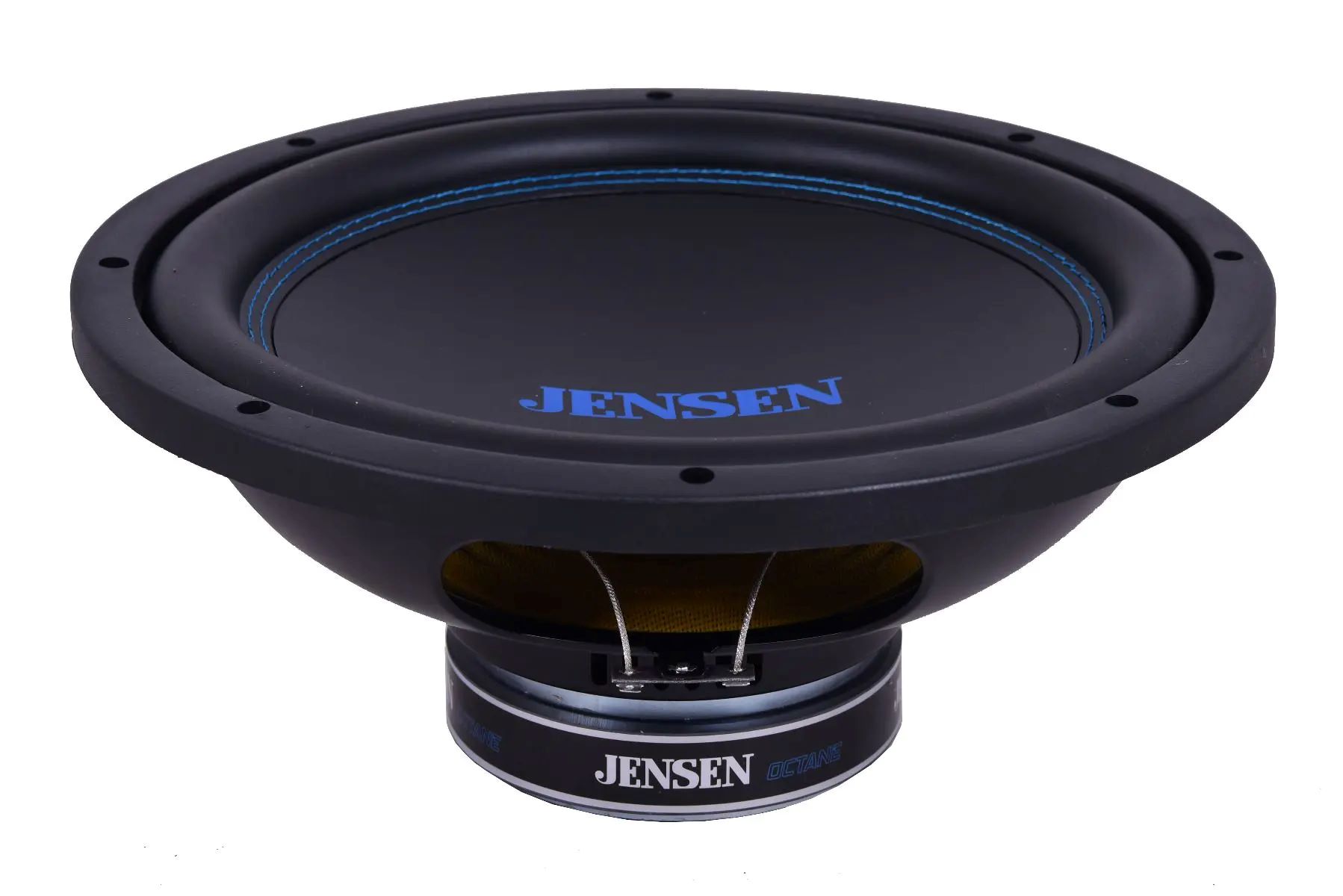Home>Devices & Equipment>Subwoofer>What Is A Dual Voice Coil Subwoofer
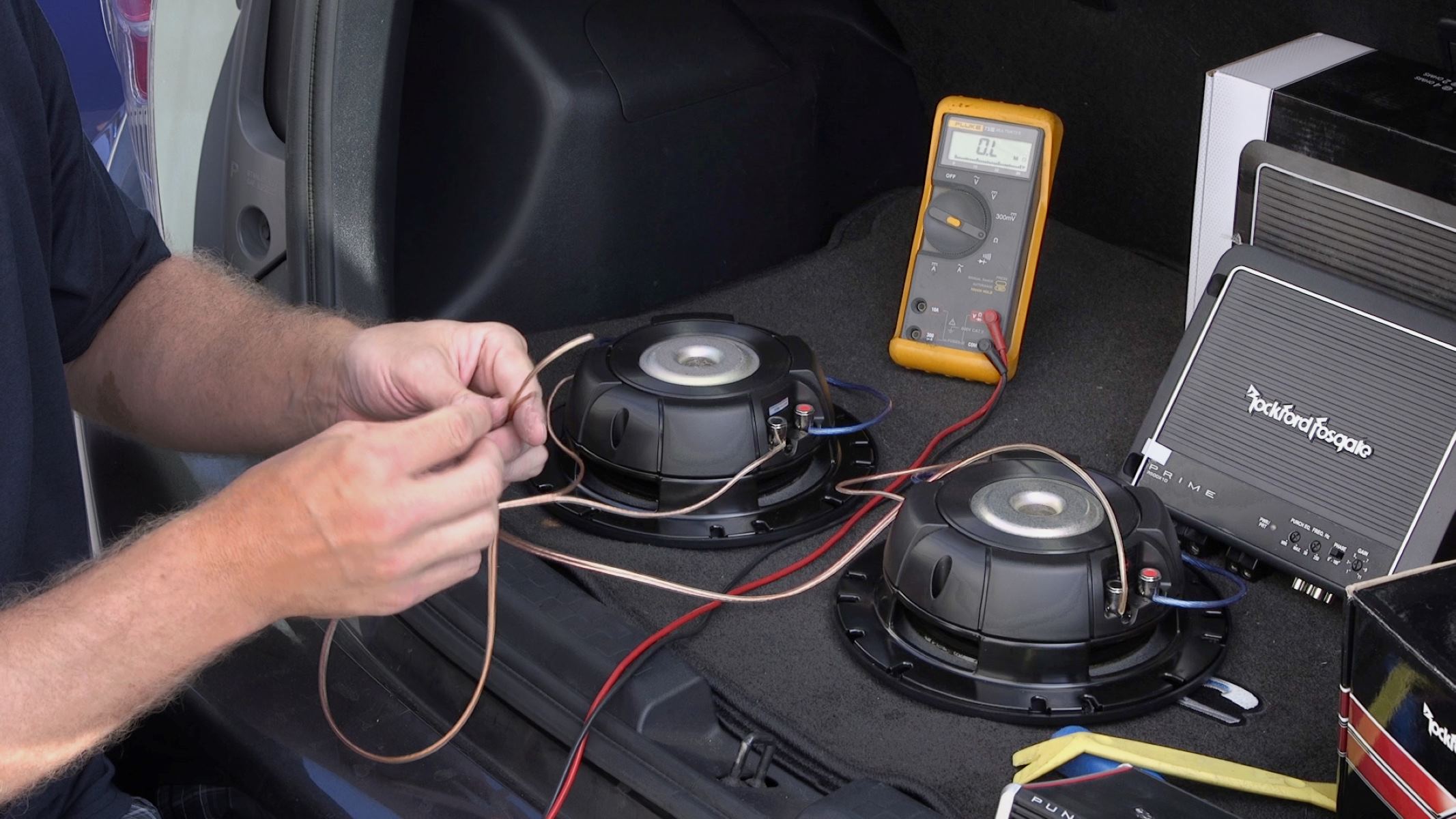

Subwoofer
What Is A Dual Voice Coil Subwoofer
Modified: February 18, 2024
Discover the power of dual voice coil subwoofers and enhance your audio experience. Get deep, immersive bass with this essential audio component.
(Many of the links in this article redirect to a specific reviewed product. Your purchase of these products through affiliate links helps to generate commission for AudioLover.com, at no extra cost. Learn more)
Table of Contents
- Introduction
- Definition of a Dual Voice Coil Subwoofer
- How Does a Dual Voice Coil Subwoofer Work?
- Benefits of Using a Dual Voice Coil Subwoofer
- Drawbacks of Using a Dual Voice Coil Subwoofer
- Applications and Uses of Dual Voice Coil Subwoofers
- Understanding Impedance and Wiring Options for Dual Voice Coil Subwoofers
- Tips for Choosing and Installing Dual Voice Coil Subwoofers
- Frequently Asked Questions (FAQs) about Dual Voice Coil Subwoofers
- Conclusion
Introduction
Welcome to the world of subwoofers, where deep bass and immersive audio experiences come to life. If you’re a true audiophile or simply someone who loves to feel the music, then you’ve probably heard of a dual voice coil subwoofer. These powerful audio devices have become increasingly popular in car audio systems and home theater setups, providing enhanced low-frequency response and greater flexibility in wiring configurations.
In this article, we’ll explore the ins and outs of dual voice coil subwoofers, diving into their definition, how they work, and the benefits and drawbacks of using them. Whether you’re a seasoned audio enthusiast or just starting your journey into the world of subwoofers, this guide will provide you with valuable insights to help you make informed decisions about incorporating dual voice coil subwoofers into your setup.
Before we delve into the technical details, let’s first establish what exactly a dual voice coil subwoofer is. Essentially, a subwoofer is a specialized loudspeaker responsible for reproducing low-frequency sound waves, often in the range of 20Hz to 200Hz. These deep bass frequencies add depth and richness to music, movies, and other audio content, enhancing the overall listening experience.
A dual voice coil subwoofer, as the name suggests, features two separate voice coils wound on a single cylinder or former. Each voice coil is connected to its own set of terminals, allowing for independent electrical connection and control. This configuration provides greater flexibility in terms of wiring options and amplifier configurations, making dual voice coil subwoofers a popular choice among audio enthusiasts.
Now that we have a basic understanding of what a dual voice coil subwoofer is, let’s dive into how it works and the benefits it offers.
Definition of a Dual Voice Coil Subwoofer
A dual voice coil subwoofer is a type of subwoofer that features two separate voice coils wound on a single cylinder or former. Each voice coil has its own set of terminals, allowing for independent electrical connection and control. This unique design provides greater flexibility in terms of wiring options and amplifier configurations, making it a popular choice among audio enthusiasts.
With a traditional subwoofer, there is typically only one voice coil, which connects to the amplifier using a single set of terminals. In contrast, a dual voice coil subwoofer offers two separate voice coils, each with its own set of terminals. This means that the subwoofer can be wired in different ways, allowing for greater impedance and wiring configuration options.
The voice coils in a dual voice coil subwoofer are wound with slightly different lengths of wire, resulting in different electrical resistances or impedances. This enables the subwoofer to handle more power and provide greater control over the movement of the subwoofer’s cone, resulting in improved bass performance and overall sound quality.
One important note is that a dual voice coil subwoofer requires a compatible amplifier or receiver that is capable of driving both voice coils simultaneously. This means that the amplifier needs to be able to handle the impedance and power requirements of the subwoofer to ensure optimal performance.
It’s also important to mention that the term “dual voice coil” refers specifically to the design of the subwoofer’s voice coil configuration and does not indicate the size or power of the subwoofer itself. Dual voice coil subwoofers are available in various sizes and power ratings, allowing you to choose the one that best suits your audio needs and preferences.
Now that we have a clear understanding of what a dual voice coil subwoofer is, let’s explore how it works and the benefits it offers.
How Does a Dual Voice Coil Subwoofer Work?
To understand how a dual voice coil subwoofer works, let’s first take a closer look at the components involved. As mentioned earlier, a dual voice coil subwoofer consists of two separate voice coils wound on a single cylinder or former. Each voice coil has its own set of terminals, allowing for independent electrical connection.
When an electrical signal is sent from the amplifier to the subwoofer, it passes through the voice coils. The voice coils, made of wire, generate a magnetic field when an electrical current flows through them. This magnetic field interacts with a permanent magnet mounted within the subwoofer’s structure, causing the voice coil assembly to move back and forth. This movement, in turn, drives the subwoofer cone, producing the low-frequency sound waves that we perceive as bass.
What sets a dual voice coil subwoofer apart is the ability to wire the voice coils in different configurations. This allows for greater impedance and wiring options, providing more flexibility in connecting the subwoofer to the amplifier.
There are two common wiring configurations for dual voice coil subwoofers: series and parallel. In a series wiring configuration, the two voice coils are connected in a serial fashion, with the positive terminal of one voice coil connected to the negative terminal of the other coil. This results in a higher overall impedance, making it suitable for amplifiers with a higher power output.
In a parallel wiring configuration, the positive terminals of both voice coils are connected together, as are the negative terminals. This results in a lower overall impedance, which allows for greater power handling capability. Parallel wiring is commonly used when using multiple subwoofers or when the amplifier’s power output is limited.
By selecting the appropriate wiring configuration, you can match the impedance of the subwoofer to the amplifier’s capabilities, maximizing power transfer and ensuring optimal performance.
In addition to impedance options, dual voice coil subwoofers offer another advantage – the ability to wire each voice coil to a separate amplifier channel. This allows for even greater control and power distribution, especially in multi-channel audio systems where different frequencies may require different amplification.
Overall, the design and wiring flexibility of a dual voice coil subwoofer make it a versatile choice for audio enthusiasts who seek enhanced bass response and greater control over their audio systems.
Benefits of Using a Dual Voice Coil Subwoofer
Choosing a dual voice coil subwoofer offers several benefits that can greatly enhance your audio experience. Let’s explore some of the advantages of using a dual voice coil subwoofer:
- Flexibility in Wiring Configurations: One of the key advantages of a dual voice coil subwoofer is the flexibility it provides in wiring options. With two separate voice coils, you have the ability to wire the subwoofer in series or parallel, allowing you to match the impedance to your amplifier’s specifications. This versatility ensures compatibility with various amplifier setups and allows for easier integration into your audio system.
- Improved Power Handling: Having two voice coils means that a dual voice coil subwoofer can handle more power compared to a single voice coil subwoofer. This increased power handling capability translates into louder and more impactful bass, providing a more immersive audio experience.
- Enhanced Bass Response: Dual voice coil subwoofers are designed to provide improved bass response compared to their single voice coil counterparts. The dual voice coils allow for greater control over the movement of the subwoofer cone, resulting in tighter and more accurate bass reproduction. This enhanced bass response adds depth and richness to music, movies, and other audio content.
- Multi-Channel Audio Systems: If you have a multi-channel audio system, using dual voice coil subwoofers can be advantageous. Each voice coil can be connected to a separate amplifier channel, enabling you to control and distribute power independently. This is particularly beneficial when different frequencies require different amplification or when using multiple subwoofers for a more balanced soundstage.
- Space Saving: Dual voice coil subwoofers can be a space-saving option, especially in applications where limited space is available. Since you can achieve a desired impedance with just one subwoofer, you can eliminate the need for multiple subwoofers to achieve the desired bass output.
These benefits make dual voice coil subwoofers an excellent choice for those seeking greater flexibility, power handling, and improved bass performance in their audio systems. It’s important to note that the specific benefits may vary depending on the quality and design of the subwoofer, as well as the overall audio setup.
Drawbacks of Using a Dual Voice Coil Subwoofer
While dual voice coil subwoofers offer several advantages, it is important to consider the potential drawbacks before incorporating them into your audio system. Let’s explore some of the drawbacks of using a dual voice coil subwoofer:
- Higher Cost: Dual voice coil subwoofers tend to be more expensive compared to their single voice coil counterparts. This is due to the additional components and engineering required to accommodate the dual voice coil design. If you are on a tight budget, the higher cost of a dual voice coil subwoofer may be a limiting factor.
- Complicated Wiring: The wiring options for dual voice coil subwoofers can be more complex compared to single voice coil subwoofers. You need to consider the impedance and wiring configurations to ensure compatibility with your amplifier or receiver. This can be challenging for those who are less experienced with audio systems or for those who prefer a simpler setup.
- Power Distribution Challenges: When using a dual voice coil subwoofer with a multi-channel audio system, properly distributing power to each voice coil can be a challenge. You need to ensure that the power distribution is balanced and optimized for the specific frequencies being reproduced. This may require additional equipment or adjustments to your system’s settings.
- Limited Availability: While dual voice coil subwoofers have gained popularity, they may still be less widely available compared to single voice coil options. This could limit your choices in terms of brand, size, and power rating. It’s important to research and ensure that the dual voice coil subwoofer you are interested in meets your specific requirements.
- Complexity in Amplifier Selection: Not all amplifiers are compatible with dual voice coil subwoofers. You need to ensure that your amplifier is capable of driving dual voice coil subwoofers and can handle the specific impedance and power requirements. This may require more research and potentially limit your options when selecting an amplifier.
It is important to weigh these drawbacks against the benefits of using a dual voice coil subwoofer to determine if it is the right choice for your audio system. Understanding these limitations can help you make an informed decision and ensure the best possible performance and compatibility.
Applications and Uses of Dual Voice Coil Subwoofers
Dual voice coil subwoofers have a wide range of applications and can be used in various audio setups. Here are some common applications and uses of dual voice coil subwoofers:
- Car Audio Systems: Dual voice coil subwoofers are popular in car audio setups, where space is often limited. Their ability to handle more power and provide flexibility in wiring options makes them ideal for enhancing the bass response in vehicles. Whether you’re looking to upgrade your factory car stereo system or build a custom audio setup, dual voice coil subwoofers can add depth and impact to your music on the go.
- Home Theater Systems: Dual voice coil subwoofers are commonly used in home theater systems to create a cinematic audio experience. By reproducing low-frequency sound effects with precision and power, they add realism and depth to movie soundtracks. Whether you have a dedicated home theater room or simply want to enhance your living room entertainment setup, dual voice coil subwoofers can provide that immersive bass performance.
- Music Production and Recording Studios: Dual voice coil subwoofers are also used in music production and recording studios. They allow producers and engineers to accurately monitor the low-frequency content of their mixes, ensuring that the bass is well-balanced and translates well to other playback systems. Dual voice coil subwoofers can help to reveal any inconsistencies or flaws in the low-end frequencies, allowing for precise control during the mixing and mastering process.
- Live Sound Reinforcement: In live sound reinforcement applications, such as concerts, music festivals, and clubs, dual voice coil subwoofers are employed to provide powerful and punchy bass. Their ability to handle high power levels and provide flexible wiring options makes them suitable for large-scale audio setups. Whether you’re a musician, sound engineer, or live event organizer, dual voice coil subwoofers can help enhance the overall audio experience for the audience.
- Custom Installations: Dual voice coil subwoofers are often used in custom audio installations, where specific requirements and space limitations need to be considered. For example, in wall-mounted or in-ceiling audio systems, dual voice coil subwoofers can provide deep bass response without taking up valuable floor space. They can also be integrated into custom-built speaker enclosures, allowing for a seamless and tailored audio solution.
These are just a few examples of the applications and uses of dual voice coil subwoofers. Their versatility and flexibility make them a popular choice in various audio setups, providing enhanced bass performance and greater control over the low-frequency reproduction.
Understanding Impedance and Wiring Options for Dual Voice Coil Subwoofers
When working with dual voice coil subwoofers, it’s important to have a good understanding of impedance and the available wiring options. This knowledge will help you optimize the performance of your subwoofer and ensure compatibility with your amplifier or receiver. Let’s delve into these concepts:
Impedance: Impedance refers to the measure of opposition to the flow of electrical current in a circuit. In the context of subwoofers, it is often represented in ohms (Ω) and determines the electrical load that the subwoofer presents to the amplifier. Dual voice coil subwoofers typically have multiple impedance options, such as 2 ohms, 4 ohms, or 8 ohms per voice coil.
Wiring Options: Dual voice coil subwoofers offer wiring flexibility, allowing for different options to achieve the desired impedance and power handling capabilities. The two common wiring configurations for dual voice coil subwoofers are series and parallel:
- Series Wiring: In series wiring, the two voice coils are connected in a serial fashion. The positive terminal of one voice coil is connected to the negative terminal of the other coil, and the remaining positive and negative terminals are used to connect to the amplifier. This configuration increases the overall impedance of the subwoofer, making it suitable for amplifiers with higher power outputs.
- Parallel Wiring: In parallel wiring, the positive terminals of both voice coils are connected together, as are the negative terminals. The combined positive and negative terminals are then connected to the amplifier. This configuration decreases the overall impedance of the subwoofer, allowing for greater power handling capability.
When deciding which wiring option to choose, consider the impedance requirements of your amplifier and the power output capabilities. It’s important to match the impedance of the subwoofer to the amplifier’s specifications for optimal performance and to prevent damage to your equipment.
Keep in mind that when wiring multiple dual voice coil subwoofers, you can choose to wire them in series or parallel as well. This allows for even greater impedance and power handling options, depending on your specific audio setup.
It is crucial to consult the user manual or specifications of both the subwoofer and the amplifier to ensure proper wiring configuration and impedance matching. Incorrect wiring or impedance mismatching can result in poor sound quality, reduced power transfer, or even damage to your equipment.
Understanding impedance and wiring options for dual voice coil subwoofers will empower you to make informed decisions when setting up and optimizing your audio system, ensuring optimal performance and longevity of your equipment.
Tips for Choosing and Installing Dual Voice Coil Subwoofers
When it comes to choosing and installing dual voice coil subwoofers, there are several considerations to keep in mind to ensure optimal performance and compatibility with your audio system. Here are some helpful tips:
- Define Your Audio Needs: Start by determining your specific audio requirements. Consider factors such as the size of your listening space, the desired power output, and the type of music or content you’ll be listening to. This will help you narrow down your options and choose a dual voice coil subwoofer that suits your needs.
- Research and Compare Models: Take the time to research and compare different dual voice coil subwoofer models from reputable brands. Look for specifications such as power handling, frequency response, and build quality. Read customer reviews and professional evaluations to gain insight into the performance and reliability of the subwoofers you are considering.
- Consider Impedance and Power Requirements: Pay attention to the impedance ratings and power handling capabilities of both the subwoofer and your amplifier or receiver. Ensure that they are compatible to prevent issues such as distorted sound or equipment damage. Choose the wiring configuration that best matches your system’s requirements and optimize power distribution.
- Plan Your Installation: Before installing your dual voice coil subwoofer, plan the placement and integration into your audio system. Consider factors such as available space, room acoustics, and potential obstructions. Take measurements and ensure that the subwoofer’s dimensions fit well within the chosen location. Adequate ventilation is also essential to prevent overheating.
- Follow Proper Wiring Techniques: When wiring your dual voice coil subwoofer, ensure that the connections are secure and properly insulated. Use quality cables and connectors to minimize signal loss and interference. Double-check the wiring polarity to ensure the subwoofer is in phase with other speakers in your audio system.
- Tune and Calibrate: Once your dual voice coil subwoofer is installed, take the time to tune and calibrate your audio system. Use an audio calibration tool or consult a professional to optimize the subwoofer’s settings, including crossover frequency, phase adjustment, and equalization, to achieve a balanced and accurate sound output.
- Regular Maintenance: To ensure the longevity and optimal performance of your dual voice coil subwoofer, follow the manufacturer’s recommended maintenance guidelines. Keep the subwoofer and its surroundings clean to prevent dust build-up, and avoid excessive heat or moisture. Periodically check the connections and cables for any signs of damage or corrosion.
Remember, proper installation and setup are crucial to achieving the best audio performance from your dual voice coil subwoofer. If you’re unsure about any aspect, don’t hesitate to consult a professional or seek guidance from experienced audio enthusiasts.
By following these tips, you can make an informed decision when choosing a dual voice coil subwoofer and ensure a smooth installation process, resulting in deep and impactful bass that enhances your overall audio experience.
Frequently Asked Questions (FAQs) about Dual Voice Coil Subwoofers
Here are some commonly asked questions about dual voice coil subwoofers:
- What is the difference between a single voice coil (SVC) and a dual voice coil (DVC) subwoofer?
A single voice coil subwoofer has only one coil and set of terminals, while a dual voice coil subwoofer has two separate coils and sets of terminals. This allows for more flexibility in wiring options and impedance matching.
- What are the benefits of using a dual voice coil subwoofer?
Dual voice coil subwoofers offer enhanced wiring flexibility, greater power handling capability, improved bass response, and the ability to wire each voice coil to a separate amplifier channel. They are versatile and can be used in various audio setups, from car audio systems to home theater setups.
- How do I choose the right dual voice coil subwoofer for my audio system?
When choosing a dual voice coil subwoofer, consider factors such as your audio needs, available space, power requirements, and budget. Research and compare different models, read customer reviews, and ensure compatibility with your amplifier or receiver.
- What wiring configuration should I use for my dual voice coil subwoofer?
The wiring configuration depends on your specific audio system and amplifier. Series wiring increases overall impedance, making it suitable for higher power outputs, while parallel wiring decreases impedance for greater power handling. Consult the user manual or specifications of your subwoofer and amplifier for the recommended wiring configuration.
- Can I mix different types of subwoofers in my audio system?
While it is technically possible to mix different types of subwoofers, it is generally recommended to use subwoofers of the same type (single voice coil or dual voice coil) and impedance to ensure optimal performance and consistent bass response.
- Do I need a separate amplifier channel for each voice coil of a dual voice coil subwoofer?
No, you do not necessarily need a separate amplifier channel for each voice coil of a dual voice coil subwoofer. The decision to use separate channels depends on your specific audio system and the level of control you want over power distribution. In many cases, a single amplifier channel can be used to power both voice coils.
These are just a few of the frequently asked questions about dual voice coil subwoofers. If you have more specific questions or concerns, it is recommended to consult the user manual of your subwoofer or seek advice from audio professionals.
Conclusion
Dual voice coil subwoofers offer a range of benefits that enhance the bass performance and flexibility of your audio system. With their two separate voice coils and wiring options, they provide greater impedance and power handling capabilities, allowing for optimal customization and compatibility with your amplifier or receiver.
These subwoofers are popular choices in car audio systems, home theaters, music production studios, live sound reinforcement, and custom installations. They deliver deep and impactful bass, bringing music and movie soundtracks to life with an immersive audio experience.
When choosing and installing a dual voice coil subwoofer, it’s important to consider factors such as your audio needs, available space, power requirements, and budget. Researching and comparing different models from reputable brands will help you find the perfect subwoofer for your specific requirements.
Understanding impedance and wiring options for dual voice coil subwoofers is crucial to ensure optimal performance. Proper wiring techniques and calibration will further enhance the overall audio experience and prevent any potential issues.
While there are some drawbacks, such as the higher cost and complexity of wiring, the benefits of using a dual voice coil subwoofer outweigh the limitations for many audio enthusiasts. Their versatility and adaptability make them a popular choice in various audio setups.
Remember to follow proper maintenance guidelines to ensure the longevity of your dual voice coil subwoofer and its optimal performance for years to come. Regular inspections, cleaning, and care will help preserve the subwoofer’s functionality and prevent any potential damage.
In conclusion, dual voice coil subwoofers offer a powerful and flexible solution for achieving deep and impactful bass in your audio system. With their unique design and wiring options, they provide audio enthusiasts with the ability to customize and optimize their listening experience.

